15+ Sample Risk Management Plan Templates
-
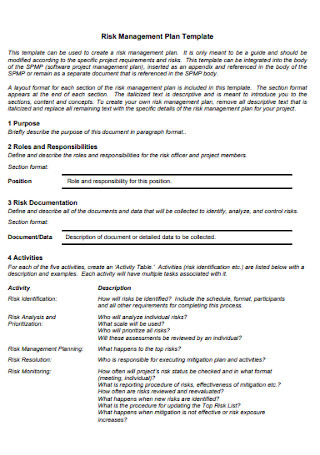
Risk Management Plan Template
download now -

Sample Risk Management Plan Template
download now -
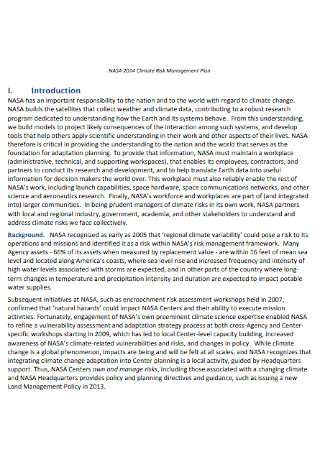
Climate Risk Management Plan
download now -
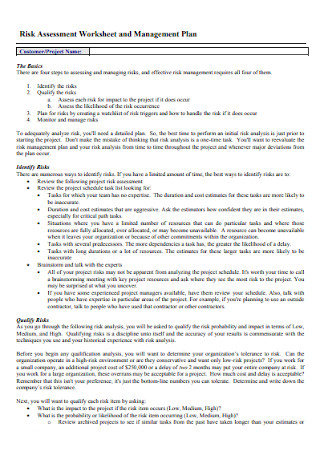
Risk Management Plan Worksheet
download now -
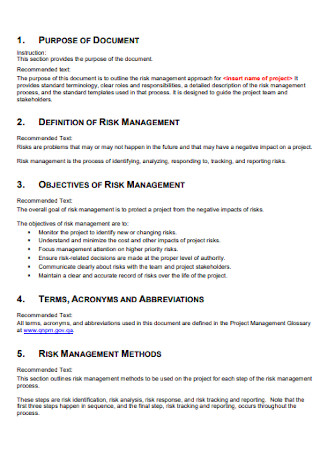
Risk Management Preparation Plan
download now -
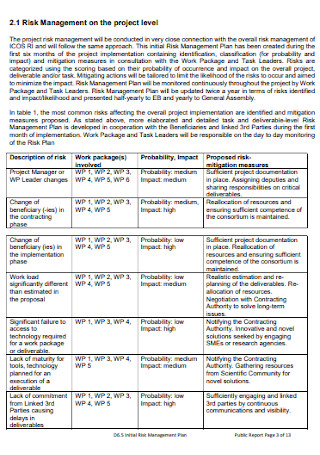
Project Risk Management Plan
download now -
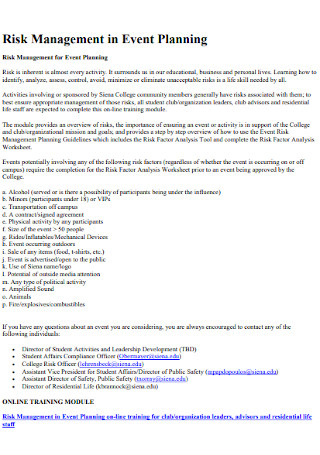
Risk Management in Event Plan
download now -
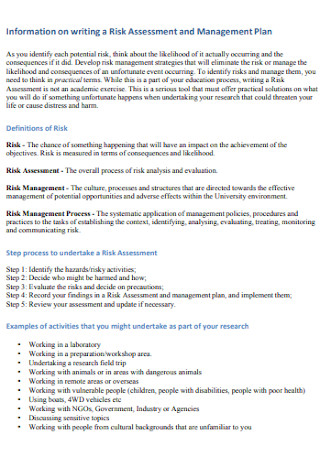
Risk Assessment and Management Plan
download now -
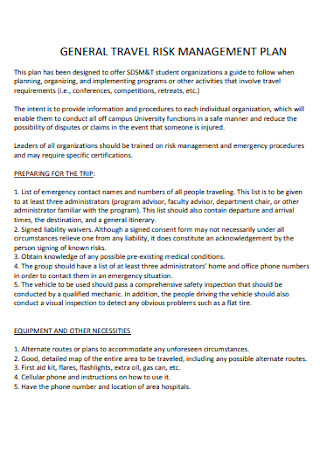
General Travel Risk Management Plan
download now -
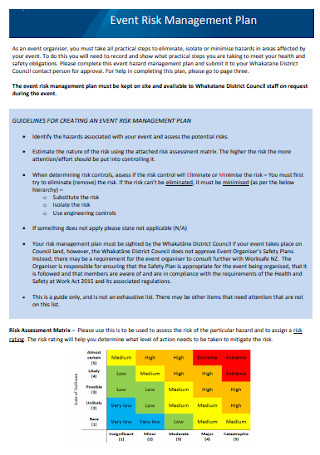
Event Risk Management Plan
download now -
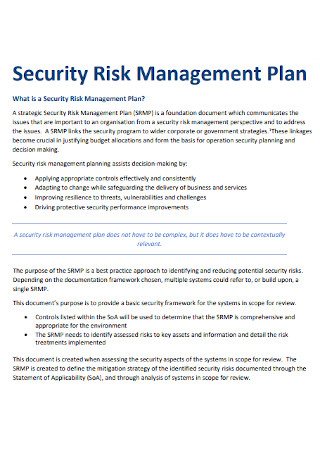
Security Risk Management Plan
download now -
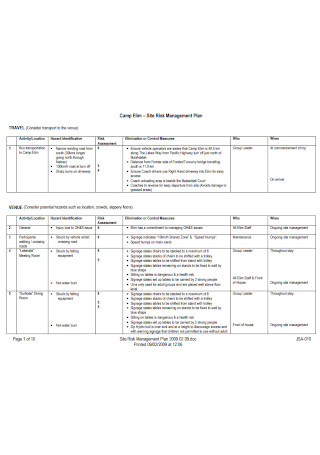
Site Risk Management Plan
download now -
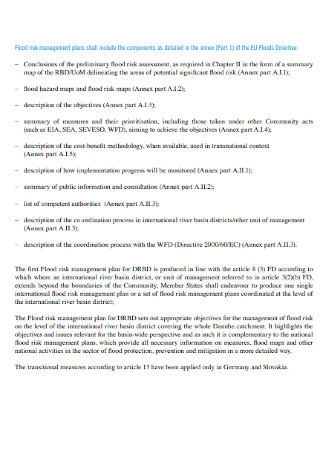
Flood Risk Management Plans
download now -

Standard Risk Management Plan Template
download now -
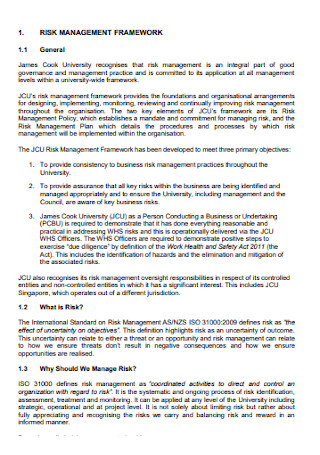
Risk Management Framework Plan
download now -
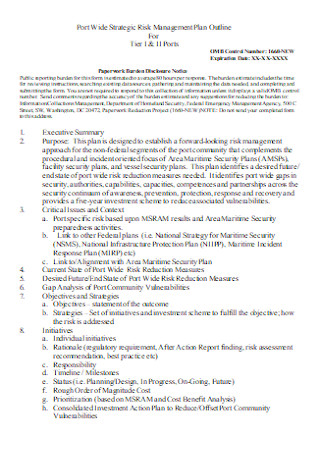
Strategic Risk Management Plan Outline
download now
FREE Risk Management Plan s to Download
15+ Sample Risk Management Plan Templates
What Is a Risk Management Plan?
What Are the Elements of a Risk Management Plan?
How to Write a Smart Risk Management Plan
FAQs
What are the different risk categories?
What are the three levels of knowability for each risk?
What are the four basic techniques of risk management?
What Is a Risk Management Plan?
First of all, risk management is one class of project plan management that specifically manages the potential risks that could impact your business or project, whether these are negative or positive effects. And such management is essential or your whole project could be in jeopardy once risks slowly cause problems. Meanwhile, a risk management plan already refers to the official written document that highlights an organization’s plans and processes for risk management. Plans can tackle how to avoid risks and even how to respond when such risks commence.
According to Statista’s 2020 global study, about 55% of clients and users of freight transportation or logistics services confirmed that they prepared risk management plans to survive their operations during the coronavirus pandemic.
Meanwhile, one of Ponemon Institute’s most intriguing takeaways in 2018 include how 68% of respondents mentioned that business leaders do not entirely understand how their company could be affected by advanced threats.
Why Are Risk Management Plans Important?
Risk management plans are one of the key parts of a project since they help you survive the business or project in the first place. Imagine having an enterprise where you just make endless financial and organizational decisions without thinking about the consequences that come afterward? That is entirely risky! Who knows? You might end up with neverending debts or worse, business closure. Always be smart by adding a smart risk management plan for your future projects to ensure no risk harms you in the process.
Also, risk management is applicable to any field, whether you run a school, pharmacy, construction business—you name it. Every organization deserves risk management to be both proactive and reactive in terms of recognizing, analyzing, and responding to risks over time. But a risk management plan is not a one-plan-fits-all type of document. Its content will depend on the organization’s specific needs. Ponemon Institute’s research survey even reported how 68% of respondents said that business leaders hardly understood how their business is affected by advanced threats. Thus, there could be new and more risks not discovered yet unless you conduct risk management. Learn more about this systematic process as you read further below.
What Are the Elements of a Risk Management Plan?
Yes, risk management plans are important and beneficial. But what exactly is found inside such a plan? Expect a handful of factors in a plan and they are all responsible for ensuring risk management runs successfully. And the elements of a risk management plan consist of the following:
How to Write a Smart Risk Management Plan
There are various considerations to think about in making risk management plans. Otherwise, risks might not be managed as expected. The flow often involves identifying, assessing, planning, and monitoring. But writing the plan can be challenging. Thankfully, we have prepared sample risk management plan templates for you to download, customize, design, and print anytime. And to ensure you come up with a plan that pays off, kindly follow these steps:
Step 1: Recognize Potential Risks with an Analysis
You already know that risk identification is one of the crucial elements in risk management. And it only makes sense that it is the first step for making your plan. What potential risks is your project facing? That is certainly what risk analysis can achieve. You can identify such risks at the start of the project and at the end when you finish a milestone. Also, there are many ways to identify risks, including interviews, brainstorming, risk checklist, and assumption analysis. Go for which option is most effective for your application.
Step 2: Evaluate Each Risk’s Consequences, Impact, and Probabilities
Priotizing risks usually lets you ask three basic questions: (1) What if this event takes place? (2) How likely would it happen? (3) How bad will the result’s impact be? And such questions would let you derive three factors which are the consequence, impact, and probability. With evaluation, you can slowly understand the answers from each question. The same goes for the qualitative and quantitave impact of such risks from the likelihood scores and the risk impact scores. You may use the SWOT analysis for a better evaluation too.
Step 3: Assign Responsibilities for Every Risk
Writing the risks does not necessarily mean that they will never happen at all. The best approach is to prepare for such scenarios and assign members about their roles and responsibilities for each risk. That way, someone is liable to take ownership if a risk turns into a real issue. Most importantly, whoever is assigned should be aware of the warnings and risk triggers instead of jumping into the wrong solutions.
Step 4: Formulate a Preventative Strategy
Preventative measures are a necessary recipe for risk management plans. Do not wait for problems to take place when you could have prevented them at first. Hence, write solutions that could solve some potential issues. The steps are easy for this. First, try avoiding the cause of the possible threat. Next, outsource the said risk to another team, like an insurance policy. Third, take steps in eliminating the risk’s impact slowly by reviewing and testing. And lastly, accept how much budget would it cost if a negative result takes place.
Step 5: Never Forget the Contingency Plan
Prevention is smart but backup plans are smarter. A business impact analysis may help you learn how to prevent risks from happening but sometimes bad things just happen. The only way is to move forward and fix the issue. So for your plan, include a contingency plan as your backup on how to adjust to the unpleasant scenario. And this backup plan should answer what your organization will do upon facing the problem. Aim for a positive outcome for your plan instead of making it worse.
Step 6: Report and Monitor the Risks Regularly
Now that you are done writing the plan, your next task is to ensure you report and monitor such risks regularly. Whoever is assigned to the risk is already responsible for tracking that. Also, update all your project management tools and ensure that everyone involved is aware of whatever is going on involving risks. Keep in mind that managing risks is a neverending process since new risks happen the more your project progresses. And by checking on a regular basis, you are guaranteed to succeed.
FAQs
What are the different risk categories?
In business, risks are categorized into the following:
- Strategic
- Compliance
- Technical
- Management
- Operational
- Organizational
- Financial
- Environmental
- Reputational
- External
What are the three levels of knowability for each risk?
Generally, a risk has three main levels of knowability which are the known, unknown, and unknowable risks. First is the known risk, which is an example that is already given by the company, an expert, a stakeholder, or you. Meanwhile, an unknown risk is something that was not discovered right away but can be recognized upon making risk management plans. On the other hand, unknowable risks refer to those that you hardly expected, especially the worst-case scenarios.
What are the four basic techniques of risk management?
The four standard techniques of risk management are avoidance, reduction, transfer, and acceptance. And with strategic plans in place for risk management, you will ace in managing risks, for sure.
Bear in mind that risks are possible no matter what kind of project you are working on. But when you have comprehensive and excellent tools to measure risk management, errors least likely occur. Rest assured, you can plan, monitor, track, manage, and report risks quickly and easily with our sample risk management plan templates. So what is the best takeaway you can get from this entire article? Simple—never let any risk go unreported!
